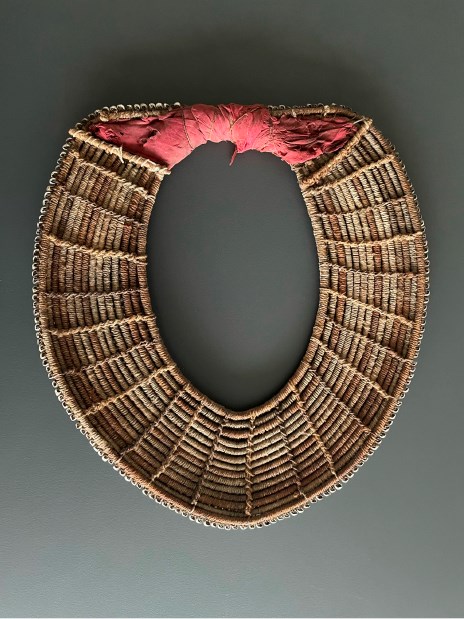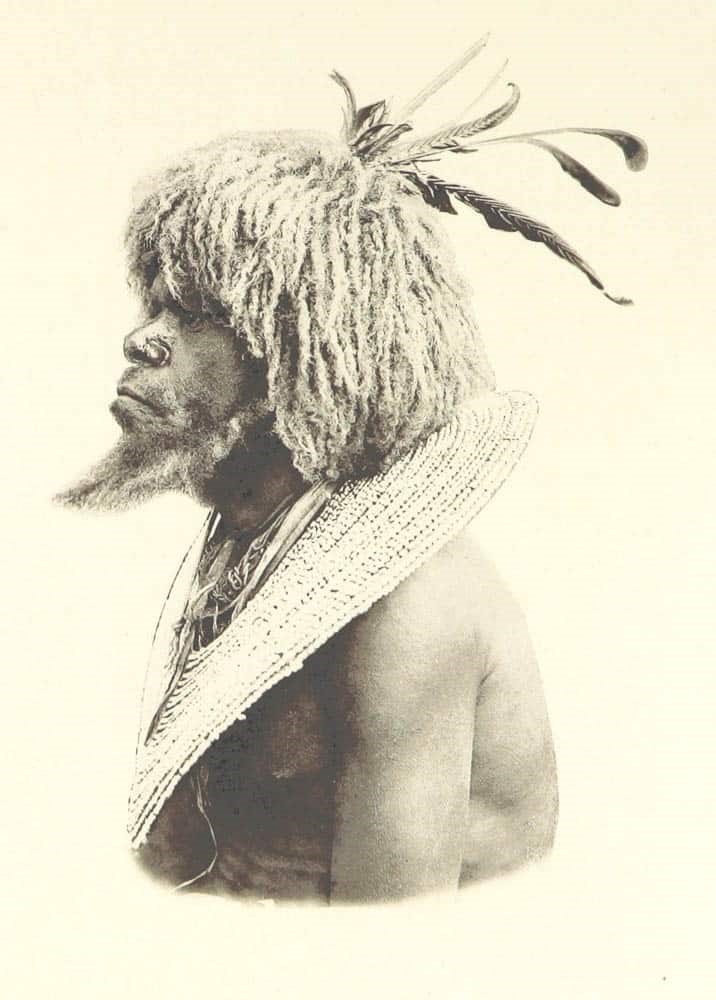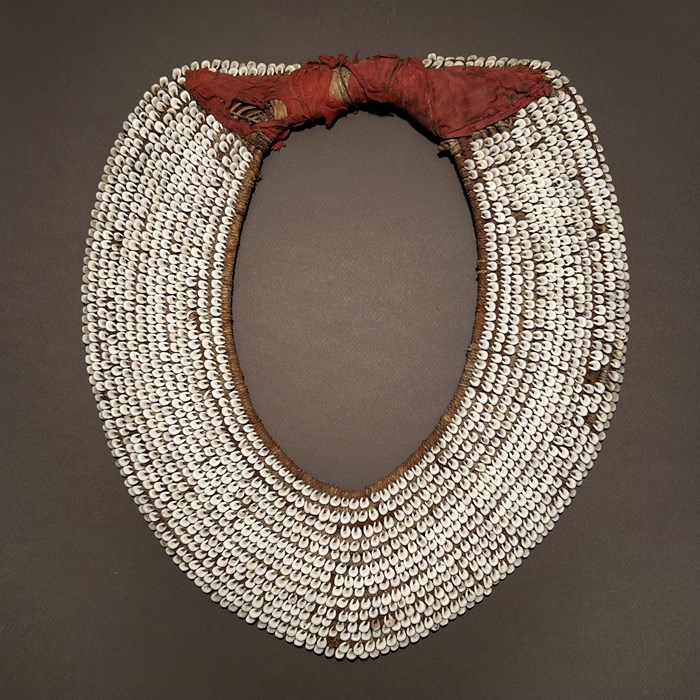Tolai MIDI or MIDDI Neck Ornament
A superb midi (or middi), a chiefly wealth and prestige neck piece in the form of a large collar covered with small shells. These ornaments were worn on ceremonial occasions as well as reportedly in combat. This large neck ornament (or collar) is composed of fourteen, cord-wrapped, rattan rings organized and attached to each other in a flat expanding, concentric format. The top is decorated with fourteen rows composed of close to two thousand overlapping nassa shells. The closing system at the rear of the collar, which is wrapped with red trade-cloth appears to show that once the object is on the person it will be worn for a certain time as the binding is complex and seemingly permanent.
The midi collars were worn by Tolai men in battle as ornaments of distinction but also as powerful charms which can afford magical protection to the wearer. The Tolai people used Nassa shells, as currency. The shell money was called tabu or tambu and is made and stored by stringing the prepared shells onto lengths of rattan. When the shell-covered, rattan strip becomes very long (as much as several hundred meters), it was rolled into a ring and bound with fiber string and wrapped with leaves. The rings represented a man's wealth and were stored in a special house. An increase in wealth through the acquisition of additional tabu meant an increase in status as well.
As early as 1906, a visitor to New Britain noted that these (midi) collars were no longer made, and that a collector would have to be lucky to obtain one in good condition, and only for a high price. The shell money rings too were no longer made, but shorter strings of shells were still occasionally used as small change as late as the 1970s. Following independence in 1975 and the resurgence of the Roots movement in many areas of the Pacific the nassa shell money was reinstated in New Britain and a local bank was set up to function as an exchange platform between the new hard currency.
Tolai people, Gazelle Peninsula, New Britain, Bismarck Archipelago, PNG, Melanesia. Nassa shells (rock snail - nassarius arcularis jonasii), rattan, bush string, vegetable fiber, and trade-cloth with a fine patina of age and use. 35 x 32 x 2 cm. 19/20th century.
Provenance Private collection, the Netherlands (acquired from the Dutch tribal art dealer Frans Faber in December 2023).
Literature:
See photographes by Richard Parkinson of the Man named Turadawai wearing a midi, Gazelle Peninsular, New Britain, Papua New Guinea 1894; and the Richard Parkinson photographe of two Midi from the Dresden Museum collection.
See :
Pfeiffer, Ludwig: DIE STEINZEITLICHE MUSCHELTECHNIK UND IHRE BEZIEHUNGEN ZUR GEGENWART. Gustav Fischer, Jena. 1914.
Lautz, Thomas: FEDERGELD UND MUSCHELKETTEN. Geldgeschichlichen Museum der Kreissparkasse, Köln. 1992.
Heermann, Ingrid & Menter, Ulrich : Schmuck der Sudsee. Linden Museum, Stuttgart, Prestel, 1999
Heermann, Ingrid (ed.) FORM COLOR INSPIRATION, Oceanic Art from New Britain. Arnoldsche, Stuttgart, Linden Museum, Stuttgart, 2001.
Midi or Middi are quite rare in collections. Notable examples are : Musée du Quai Branly – Jacques Chirac (ex Van den Abbeele, Ex Gal. Meyer) ; Pitt Rivers Museum, Oxford ; Australian Museum, Sydney ; Museum of Victoria, Melbourne ; Linden Museum Stuttgart ; Rautenstrauch-Joest Museum, Köln ; and a small number in private collections : Voyageurs & Curieux, Paris ; Collection Mis, Bruxelles ; private collection, the Netherlands ; etc.












